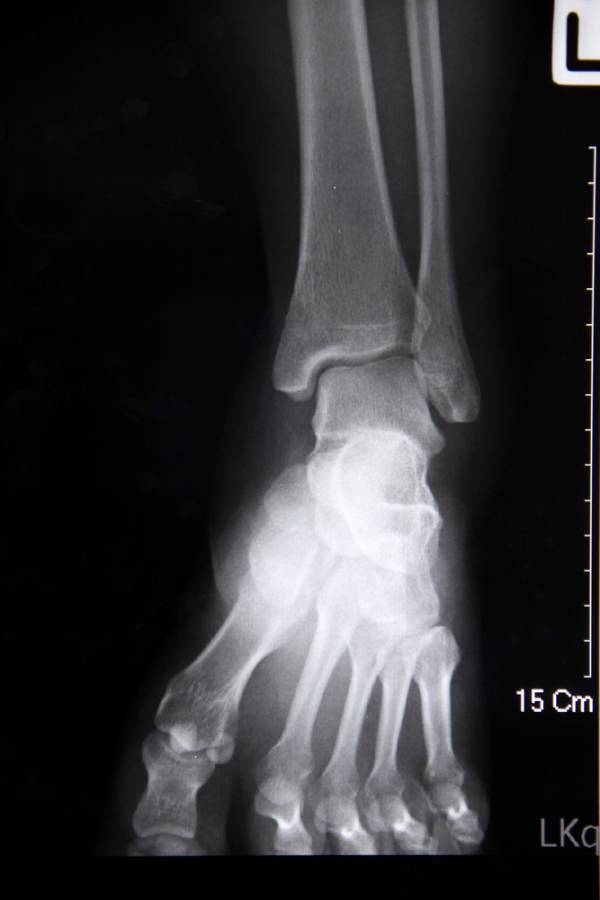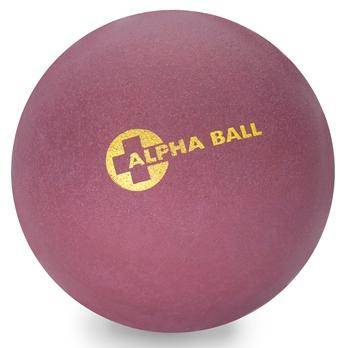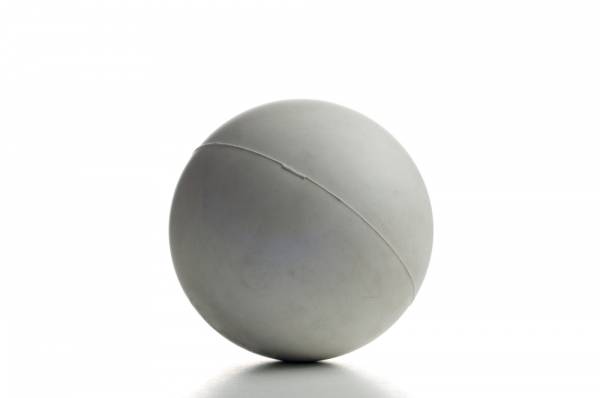As a Yoga Tune Up teacher and Rolfing practitioner I spend a lot of my work life getting people to roll around on balls. Yoga Tune Up (YTU) therapy balls to be precise. And since I do this with an awful lot of athletes, as well as people recovering from injuries and surgeries, I am frequently asked how the therapy balls differ from lacrosse balls or foam rollers, the two other most prevalent self-care tools. Let the debate begin!
1. Yoga Tune Up Therapy Balls:
Let’s just be clear that this is not an unbiased article. My vote, clearly, is going to the YTU therapy balls. So instead of pretending to be an impartial journalist, I’ll instead tell you why they get my vote.
I’ve been a manual therapist, as a Rolfing practitioner, for thirteen years now. For many of those years I struggled with how frustrating it was that I couldn’t find any tool or system to send people home with so that they could “Rolf themselves” in their time when they weren’t on my table. I do find that most people need the sophisticated eyes and hands of a practitioner to unravel their compensatory patterns, at least initially, but as a general rule I adhere to the belief that our ultimate goal as practitioners should always be to get people to be the best self-healing organisms that they can be. And often smart self-care systems make a world of difference towards achieving this goal.
Enter Yoga Tune Up. As it is a conscious corrective exercise form, Yoga Tune Up is vastly more than just balls [enter your favorite balls joke here]. But for the purposes of this article I will focus, ahem, on their balls, though I do utilize the corrective exercise work with clients and students just as much, if not more than I use the therapy ball work.
The perks of the YTU therapy balls:
Grippy: The rubber the YTU therapy balls are made of allows for a yummy amount of grab to your soft tissue, especially if you roll in the buff, which I highly recommend (but we do not actually do in my group classes, so don’t get on a plane expecting to show up to a room full of nudies or anything). This grip is important because it allows you to hook into the superficial fascia and create the all-important shear in that layer. This will also create an effect in the deep fascia because connective tissue being, well, connected, all the layers are tethered to one another. Most injuries are fascial and not muscular (more on this in next month’s post), that said, keeping the fascia hydrated so that all of our soft tissue layers can glide on one another, as they are designed to, will go a long way toward not only decreasing chronic pain and rehabilitating any current injuries, but also decreasing your risk for future injuries.
Pliable: The rubber the YTU therapy balls are made of is responsive. It has some give and therefore yields at bony prominences. This is important because you don’t wind up just reaming at your bones, which is at best unpleasant and at worst injurious. This also shields you from some of the risk of impinging nerves, which we clearly don’t want.
 The YTU therapy balls start out firm and the more you use them the softer and more pliable they become. I like to have a mélange of YTU therapy balls in my life with different amounts of firmness and give depending on how long I’ve used them. That way when I want to get into my scalenes or my ankle at my lateral malleolus, I grab my softest set, while my upper trapezius yearns for the firmest, newest therapy balls.
The YTU therapy balls start out firm and the more you use them the softer and more pliable they become. I like to have a mélange of YTU therapy balls in my life with different amounts of firmness and give depending on how long I’ve used them. That way when I want to get into my scalenes or my ankle at my lateral malleolus, I grab my softest set, while my upper trapezius yearns for the firmest, newest therapy balls.
Speaking of working at the lateral malleolus (the bony protuberance on the outside of your ankle), that’s the other benefit of the springiness of the YTU therapy balls. Because they are pliable, you can work quite close to the bones because the rubber will nestle in around the protuberances rather than impinging them. This is good news since you will often get a more dramatic result working at attachment sites of muscles, which are, more often than not, on the bone.
Firm, but not too hard: Yes, this is an offshoot of pliability, but I wanted to highlight this particular aspect of the therapy balls to make what is perhaps the most important point of this post. While it is totally logical to assume that a harder implement would penetrate our tissue more deeply, research tells us otherwise. At the Fascia Research Congress, Leonid Blyum presented a study in which he utilized engineering principals to test out how different mechanical stress transfer mediums (i.e. tools of varying hardness and softness) would affect human tissue. The result of the study showed that softer implements impacted the connective tissue about twice as effectively as the harder implements. (If you read Blyum’s study, note then when he mentions “rubber” as a hard tool, he was using hard tire rubber, not springy responsive rubber.)
But what about the fact that it often feels more intense when you use a harder tool? More often than not, what you actually perceive is your tissue’s kickback. In other words, your tissue tightens up, your sensory nerves get agitated, and it feels “deeper” as your tissue simultaneously blocks the implement’s depth and impact. We need to question our assumptions that if a feeling is more uncomfortable, that means it is doing deeper work. If you want to bliss out on agitating your tissue be my guest, but if you want your tissue quality to actually change, you may need a springier object.
This isn’t to say there is no sensation or no intensity when actually impacting your tissue, but it’s about finding that sweet spot. As a general rule, if you need to hold your breath, breathe shallowly, grimace, or reflexively clench muscles anywhere else in your body, you are not working more deeply in your tissue, you are just setting yourself up for spasm and potentially inflaming your tissue.
 Three different sizes: Last but not least, the YTU therapy balls come in three different sizes that mimic different strokes of a massage therapist (and there is also an air-filled ball for doing abdominal self-massage). The original YTU therapy balls create a more trigger point, thumb type impact, the plus-size balls are more like an elbow, and the alpha is the broadest stroke, imitating more closely a soft fist of a massage therapist.
Three different sizes: Last but not least, the YTU therapy balls come in three different sizes that mimic different strokes of a massage therapist (and there is also an air-filled ball for doing abdominal self-massage). The original YTU therapy balls create a more trigger point, thumb type impact, the plus-size balls are more like an elbow, and the alpha is the broadest stroke, imitating more closely a soft fist of a massage therapist.
But what about the other tools?
Lacrosse Balls:
Oh the ubiquitous lacrosse balls. On the upside, they do have the grippy surface, which is a bonus, but they completely lack pliability. They are quite hard and therefore, counterintuitive as it may seem, they don’t penetrate as deeply, while simultaneously putting you at more risk for bony or nerve impingements.
 Even Kelly Starrett of MobilityWOD, the veritable king of the lacrosse ball, (who I am quite fond of), has mentioned several times that he initially chose the lacrosse ball as his tool of choice in MobilityWOD primarily because it is a cheap and easily found tool, not because it is the best tool. In his excellent workshop on CreativeLIVE he describes them as “too hard” and “too square” for adequately assessing many areas of the body. And he walks his talk by having Jill Miller and her magical therapy balls regularly featured on MobilityWOD. In fact, the two have teamed up for a not-yet-released therapy ball project (stay tuned!). Starrett has also developed his own tools which are sold through Rogue Fitness, but I haven’t tried them and so can’t review them. Sorry folks!
Even Kelly Starrett of MobilityWOD, the veritable king of the lacrosse ball, (who I am quite fond of), has mentioned several times that he initially chose the lacrosse ball as his tool of choice in MobilityWOD primarily because it is a cheap and easily found tool, not because it is the best tool. In his excellent workshop on CreativeLIVE he describes them as “too hard” and “too square” for adequately assessing many areas of the body. And he walks his talk by having Jill Miller and her magical therapy balls regularly featured on MobilityWOD. In fact, the two have teamed up for a not-yet-released therapy ball project (stay tuned!). Starrett has also developed his own tools which are sold through Rogue Fitness, but I haven’t tried them and so can’t review them. Sorry folks!
Foam Rollers:
Hiding out in the corner of every gym you’ve ever gone to is the stash of foam rollers. Sadly, these lack pliability and stick, and are also too broad to be able to find their way into the important nooks and crannies. While they can break up some fascial adhesions and generate blood flow, both of which are good things, they cannot get into specific areas with any precision or refinement, and are therefore surface tools at best. Also, people generally flay themselves on these things by moving much too fast and grimacing through it. Fascia is slow to respond, so if you are going to use a foam roller, move slowly so you actually get benefit to the soft tissue instead of just riling things up.
All that said, self-care tools, when used intelligently and not as convenient personal torture devices, can yield significant benefits to your tissue which can decrease pain, reduce risk of injury, and help you to heal and recover more quickly. So testing out which benefits you the most is a worthy journey to take.
Ankle and lacrosse ball photos courtesy of Shutterstock.






